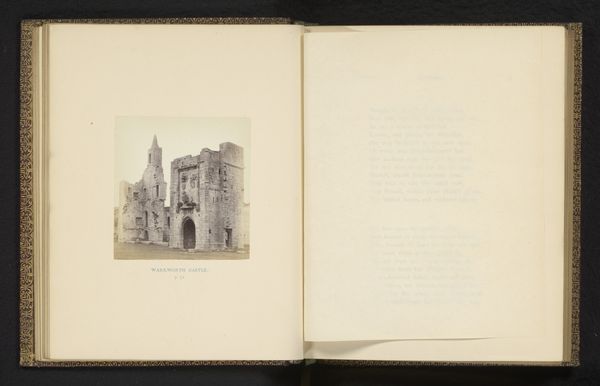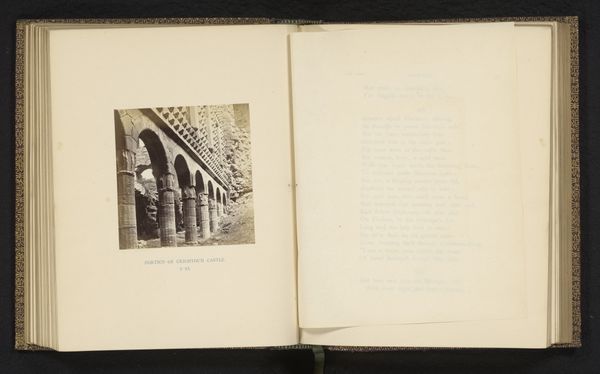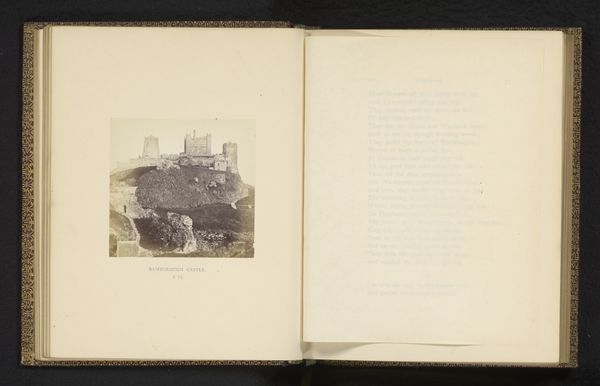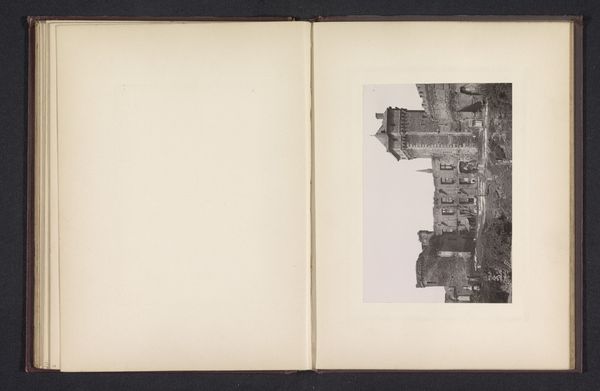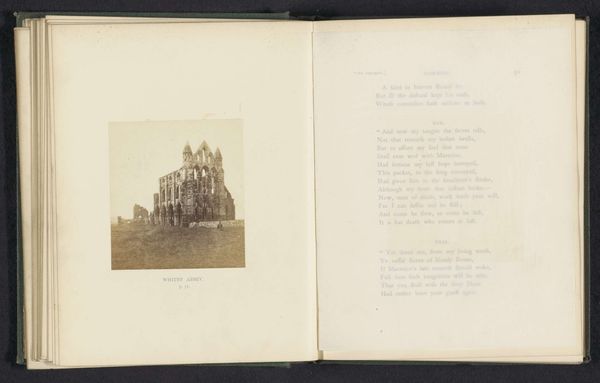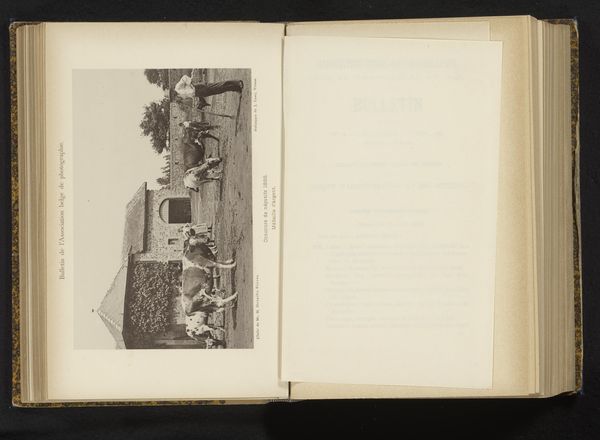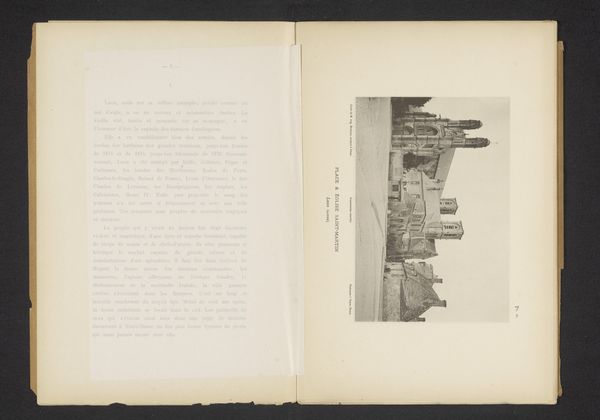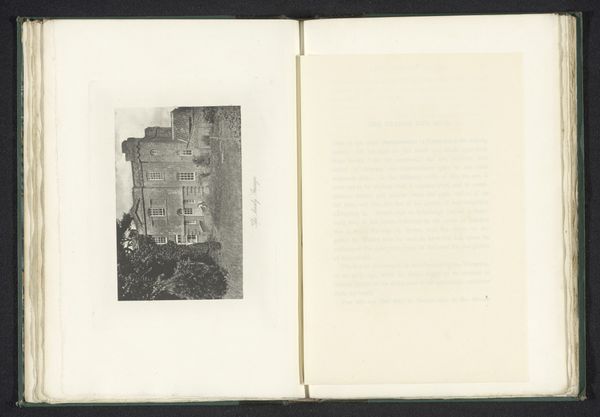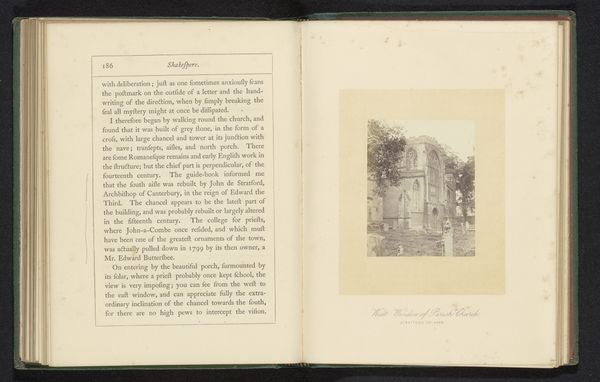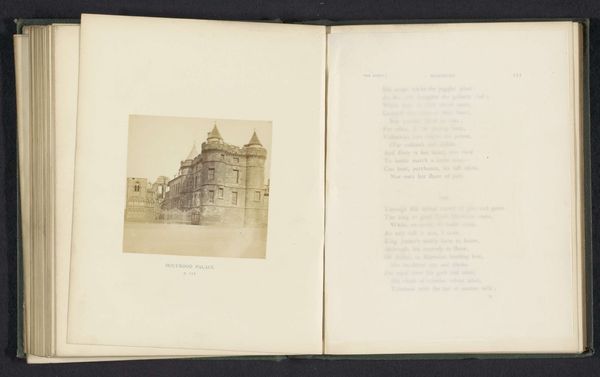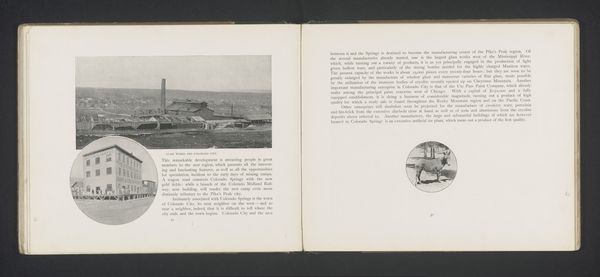
photography
#
aged paper
#
homemade paper
#
script typography
#
hand drawn type
#
landscape
#
photography
#
personal sketchbook
#
hand-drawn typeface
#
thick font
#
sketchbook drawing
#
handwritten font
#
sketchbook art
#
realism
Dimensions: height 150 mm, width 195 mm
Copyright: Rijks Museum: Open Domain
Editor: This is “Ruïne van de Sint-Walrickkapel” from 1909 by Benjamin Charlé. It's a photograph presented as part of a sketchbook, featuring a handwritten description beside the image. The ruin itself is so striking, a lone sentinel against the landscape... What do you see in this pairing of image and text? Art Historian: I am drawn to the image of the ruin and how it serves as a potent symbol. Ruins speak to cultural memory, the ebb and flow of belief systems and societal structures. The photograph captures the physical remnants of a once-vital space, inviting reflection on the passage of time and the transient nature of human endeavors. Editor: The handwritten script definitely adds a personal dimension. Art Historian: Indeed. The script itself functions as a symbolic layer. Handwritten text is inherently intimate, connecting us to the individual who documented this scene. Consider how the act of writing transforms observation into a deliberate act of remembrance. The choice to include a handwritten description alongside the photograph suggests a desire to imbue the image with a deeper, more personal meaning, like a direct communication through time. Do you think this contrasts or harmonizes with the stark, objective feel of the photograph? Editor: I think it creates an interesting tension, contrasting objective documentation with subjective interpretation. The handwriting invites intimacy. The photograph provides a window onto a specific moment in the life of this ruin, but it's the hand-written context that gives it greater meaning. Art Historian: Precisely. It’s a powerful juxtaposition! By understanding these symbols, we unveil hidden narratives about loss, resilience, and the ongoing dialogue between the past and the present. Editor: This has given me a whole new way to appreciate the layers in this image. I never thought about the script as being an important symbol as well. Art Historian: The world is full of such connections if you just look close enough!
Comments
No comments
Be the first to comment and join the conversation on the ultimate creative platform.

